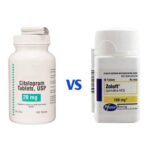Does Citalopram Help With Panic Attacks?

Does Citalopram Help With Panic Attacks?
According to Mayo Clinic, a panic attack is a sudden episode of intense fear that triggers severe physical reactions when there is no real danger or apparent cause. Panic attacks can be very frightening. When panic attacks occur, you might think you’re losing control, having a heart attack, or even dying.
Many people have just one or two panic attacks in their lifetimes, and the problem goes away, perhaps when a stressful situation ends. But if you’ve had recurrent, unexpected panic attacks and spent long periods in constant fear of another attack, you may have a condition called panic disorder. Although panic attacks themselves aren’t life-threatening, they can be frightening and significantly affect your quality of life. But treatment can be very effective.
Panic attack symptoms
The Diagnostic and Statistical Manual of Mental Disorders, 5th edition (DSM-5) defines a panic attack as “an abrupt surge of intense fear or intense discomfort that reaches a peak within minutes.”
Panic attacks produce intense fear that begins suddenly, often with no warning. An attack typically lasts for 5 to 20 minutes. In extreme cases, symptoms may last for more than 1 hour. The experience is different for everyone, and symptoms often vary.
Common symptoms associated with a panic attack include:
• racing heart rate or palpitations
• shortness of breath
• feeling like you’re choking
• dizziness or vertigo
• lightheadedness
• nausea
• sweating or chills
• shaking or trembling
• changes in your mental state, like a feeling of derealization (feeling of unreality) or depersonalization (being detached from oneself)
• numbness or tingling in your hands, feet, or face
• chest pain or tightness
• fear that you might die
Sometimes a panic attack is triggered by a specific event or external stimulus. Other times, the symptoms of a panic attack occur for no clear reason. Typically, the symptoms are not proportionate to the level of danger that exists in your environment.
Because of their unpredictable nature, panic attacks can significantly affect your everyday life. Some people experience panic attacks at work, in public with friends, or even at home. You may have a panic disorder if you’ve had four or more panic attacks, or you live in fear of having another panic attack after experiencing one. In order to meet the diagnostic criteria for panic disorder, you must experience unexpected panic attacks.
What is citalopram?
Citalopram oral tablet is a prescription drug that’s available as the brand-name drug Celexa. It’s also available as a generic drug. Generic drugs usually cost less. In some cases, they may not be available in every strength or form as the brand-name version. Citalopram is used to treat depression. It may be used as part of a combination therapy. This means you may need to take it with other medications. Citalopram is also available as an oral solution.
How citalopram works
Citalopram is part of the antidepressant drug class called selective serotonin reuptake inhibitors (SSRIs). A class of drugs is a group of medications that work in a similar way. These drugs are often used to treat similar conditions. SSRIs act in your brain to increase levels of a substance called serotonin. Having more serotonin in your brain can improve symptoms of depression.
Does citalopram help with panic attacks?
Yes, citalopram can prevent serotonin from being reabsorbed back into the nerve cells that previously released it. This makes more serotonin available to improve the transmission of messages between neurons. This simple act can improve mood, reduce feelings of anxiety, and decrease the severity of panic attacks and other panic disorder symptoms.
A study that evaluated the effect of citalopram and reboxetine on panic attack severity reported that citalopram had a superior effect and led to significant improvements in panic attack severity. Available data also suggest an advantage for citalopram in treating comorbid depressive symptoms.
A controlled, prospective, 1-year trial of citalopram in the treatment of panic disorder also reported that citalopram in the dosage range of 20 to 60 mg/day is effective, well-tolerated, and safe in the long-term treatment of patients who have panic disorder.
What are the possible side effects of citalopram?
According to Mayo Clinic, call your doctor or healthcare provider if any of the following side effects occur:
More common
• Change or problem with discharge of semen
Less common
• Agitation
• blurred vision
• confusion
• decreased interest in sexual intercourse
• fever
• inability to have or keep an erection
• increase in the frequency of urination or amount of urine produced
• lack of emotion
• loss in sexual ability, desire, drive, or performance
• loss of memory
• menstrual changes
• skin rash or itching
• trouble breathing
Rare
• Behavior change similar to drunkenness
• bleeding gums
• breast tenderness or enlargement or unusual secretion of milk (in females)
• chills
• delayed or inability to have an orgasm
• diarrhea
• difficulty with concentrating
• dizziness or fainting
• drowsiness
• increased hunger
• increased thirst
• irregular heartbeat
• lack of energy
• lethargy
• nosebleed
• overactive reflexes
• painful urination
• poor coordination
• purple or red spots on the skin
• rapid weight gain
• red or irritated eyes
• redness, tenderness, itching, burning, or peeling of the skin
• seizures
• shivering
• slow or irregular heartbeat (less than 50 beats per minute)
• sore throat
• stupor
• sweating
• swelling of the face, ankles, or hands
• talking or acting with excitement you cannot control
• trembling, shaking, or twitching
• trouble withholding or releasing urine
• unusual or sudden body or facial movements or postures
• unusual tiredness or weakness
Incidence not known
• Back or leg pains
• black, tarry stools
• blistering, peeling, or loosening of the skin
• bloating
• bloody stools
• chest pain or tightness
• confusion as to time, place, or person
• constipation
• cough
• darkened urine
• difficult or fast breathing
• difficulty with swallowing
• drooling
• fast, slow, or irregular heartbeat
• general body swelling
• hive-like swelling on the face, eyelids, lips, tongue, or throat
• hives, itching
• holding false beliefs that cannot be changed by the fact
• impaired consciousness, ranging from confusion to coma
• indigestion
• joint or muscle pain
• large, hive-like swelling on the face, eyelids, lips, tongue, throat, hands, legs, feet, or sex organs
• loss of appetite
• loss of bladder control
• loss of consciousness
• muscle cramps, spasms, tightness, twitching, or jerking
• painful or prolonged erection of the penis
• pale skin
• penile erections, frequent or continuing
• puffiness or swelling of the eyelids or around the eyes, face, lips, or tongue
• recurrent fainting
• red skin lesions, often with a purple center
• rhythmic movement of the muscles
• seeing, hearing, or feeling things that are not there
• sores, ulcers, or white spots in the mouth or on the lips
• stomach pain
• swelling of the breasts or unusual milk production
• tenderness, pain, swelling, warmth, skin discoloration, and prominent superficial veins over the affected area
• total body jerking
• twitching, twisting, uncontrolled repetitive movements of the tongue, lips, face, arms, or legs
• uncontrolled jerking or twisting movements
• unusual excitement
• vomiting of blood or material that looks like coffee grounds
• yellowing of the eyes or skin
Some side effects may occur that usually do not need medical attention. These side effects may go away during treatment as your body adjusts to the medicine. Also, your health care professional may be able to tell you about ways to prevent or reduce some of these side effects. Check with your health care professional if any of the following side effects continue or are bothersome or if you have any questions about them:
More common
• Decrease in sexual desire or ability
• sleepiness or unusual drowsiness
Less common
• Body aches or pain
• change in sense of taste
• continuing ringing or buzzing or other unexplained noise in the ears
• gas
• headache (severe and throbbing)
• hearing loss
• heartburn
• increased sweating
• increased yawning
• loss of voice
• loss or thinning of the hair
• sneezing
• stuffy or runny nose
• tingling, burning, or prickly feeling on the skin
• tooth grinding
• unusual increase or decrease in weight
• watering of the mouth
Rare
• Increased hair growth on the forehead, back, arms, and legs
• tanning or blue-gray discoloration of the skin
Incidence not known
• Bruising
• inability to sit still
• large, flat, blue, or purplish patches on the skin
• need to keep moving
• uncontrolled eye movements
Other side effects not listed may also occur in some patients. If you notice any other effects, check with your healthcare professional.
Call your doctor for medical advice about side effects. You may report side effects to the FDA at 1-800-FDA-10.





